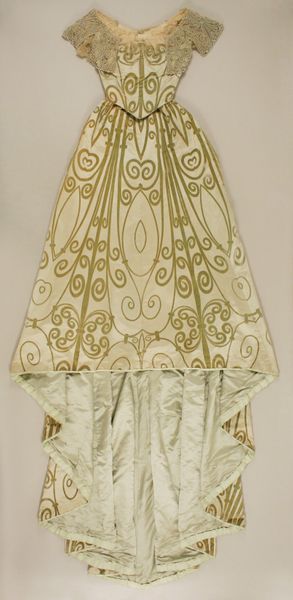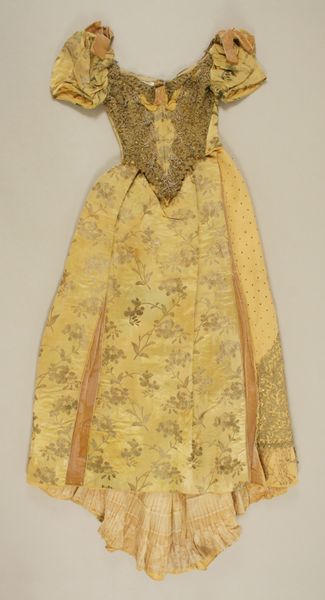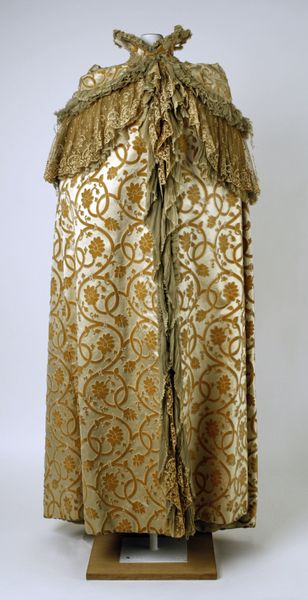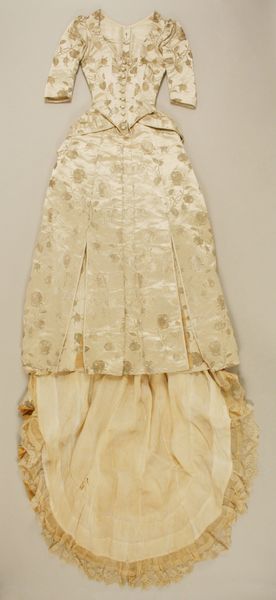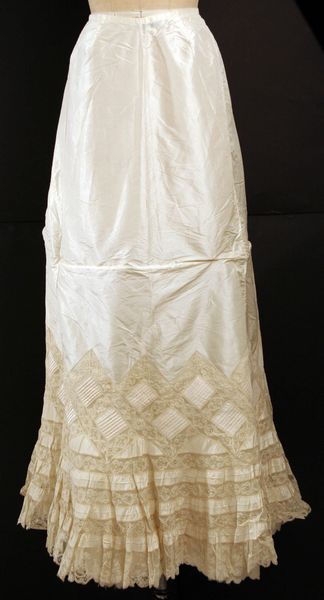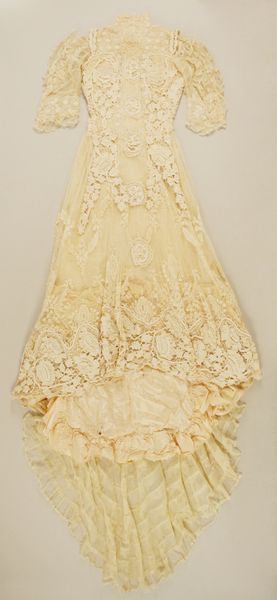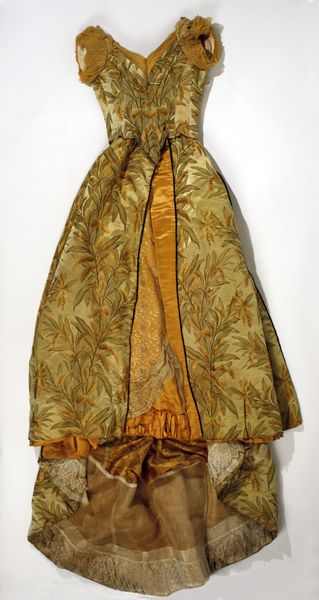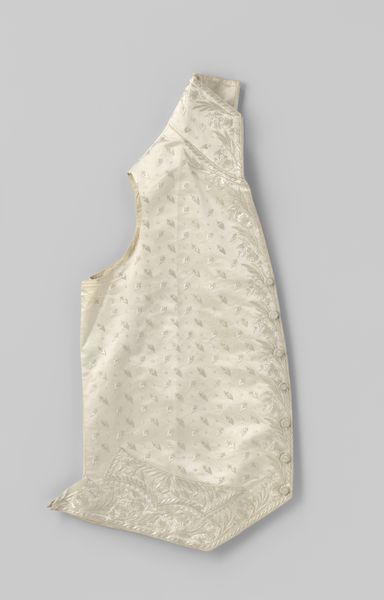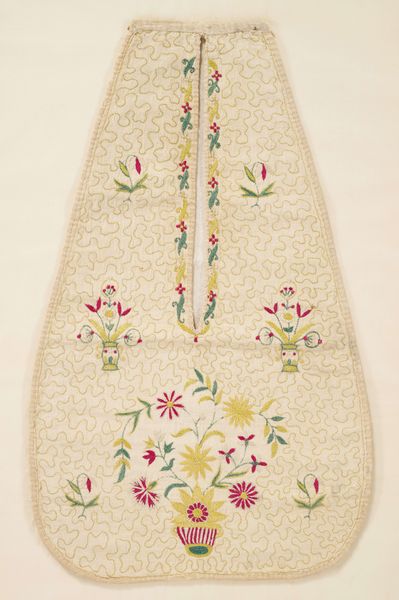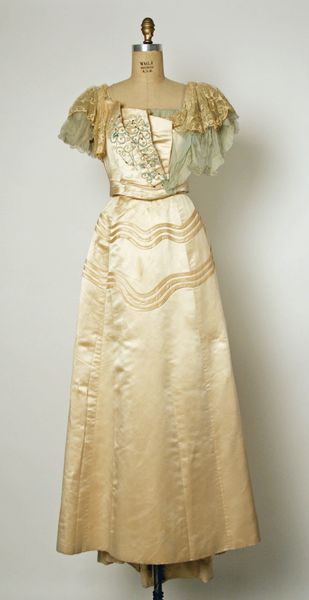
Copyright: Public Domain
Editor: We're looking at a ball gown from the House of Worth, dated between 1882 and 1892. It's made of textile, and the embellishments almost look like swirling clouds with sun rays bursting out. The craftsmanship is astonishing! What are your thoughts on the social implications of this opulent piece, given its time period? Curator: It’s quite striking, isn’t it? The House of Worth essentially invented haute couture, catering to an elite clientele with immense purchasing power. This gown represents not just personal wealth but also the Industrial Revolution's impact on societal structures. The rise of industrialists and entrepreneurs created a new class of people eager to display their status. How do you think the design itself contributed to that display? Editor: I suppose the lavish use of material and intricate designs clearly communicated status and leisure. The swirling patterns seem to elevate the wearer, almost making her appear heavenly. Was there any particular event this gown would have been suitable for? Curator: Absolutely. These gowns were designed to impress at court gatherings, opera premieres, and private balls – places where power and influence were concentrated. The textiles and patterns could convey subtle political allegiances. For example, certain colors or motifs could signal support for the monarchy or express a nation's cultural pride. It wasn't just about fashion; it was about communicating your position in a very visible and coded way. Editor: That makes so much sense. It's like wearable propaganda. So it goes beyond just the aesthetic to almost making political statements? Curator: Precisely. And let's consider the labor behind this garment. The seamstresses, embroiderers, and other artisans who poured their skill into creating this dream, rarely if ever enjoyed its privileges. That disparity speaks volumes about the era's social imbalances and the hidden costs of luxury. Editor: I hadn't considered the working conditions. Thanks, that's given me a lot to reflect on! Curator: Likewise! This gown prompts questions about the Gilded Age itself, its contradictions, and who had a seat at the table.
Comments
No comments
Be the first to comment and join the conversation on the ultimate creative platform.
